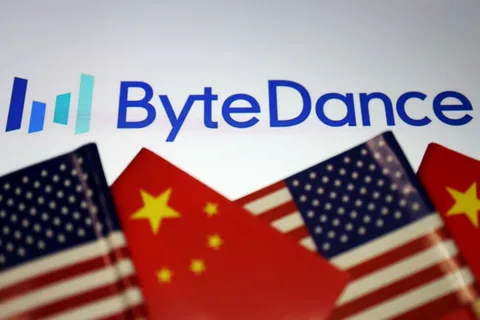Introduction
ByteDance, the parent company of the wildly popular TikTok app, has rapidly ascended to global prominence over the last few years. While TikTok’s cultural impact is undeniable, the company is now making waves in an entirely different field—AI chip development. ByteDance’s venture into designing in-house AI chips signals a bold move that could transform not only its technological capabilities but also the broader landscape of artificial intelligence and hardware innovation.
In a market dominated by well-established semiconductor giants like Nvidia, Intel, and AMD, the idea that a social media company like ByteDance would pursue in-house AI chip development may seem audacious. Yet, this move is part of a broader trend where tech companies, from Apple to Google, are increasingly building custom silicon to meet the specific needs of their platforms and services.
In this post, we’ll explore the motivations behind ByteDance’s foray into AI chips, its potential impact on the company’s business strategy, and what it means for the AI and semiconductor industries at large. We’ll also examine the technological implications of this bold move and consider whether it is positioning itself to be a major player in AI innovation.

The Rise of ByteDance: From TikTok to Tech Giant
ByteDance’s ascent to prominence has been nothing short of meteoric. Founded in 2012 by Zhang Yiming, it quickly grew into a tech juggernaut thanks to the phenomenal success of TikTok. With over 1 billion monthly active users, TikTok has become one of the most downloaded apps globally, reshaping how people consume and create digital content.
The company’s algorithm-driven approach to content recommendation is one of the key reasons for its success. Unlike other social media platforms, TikTok’s algorithm uses artificial intelligence (AI) to serve users a highly personalized feed, keeping them engaged for longer periods.
However, ByteDance’s ambitions extend far beyond social media. While TikTok has been the company’s crown jewel, it has quietly been building a diverse portfolio of products and services that span various industries, including e-learning, entertainment, and enterprise solutions.
The company’s latest endeavor into AI chip development marks a significant step in its evolution from a content platform to a full-fledged technology company. ByteDance’s decision to develop custom AI chips is indicative of its broader strategy to become more vertically integrated, reducing its reliance on third-party hardware suppliers and gaining greater control over its own technological stack.
With the increasing demand for computing power in AI applications, it’s decision to enter the AI chip development space could be a game-changer. AI-powered services, such as TikTok’s recommendation engine, require massive computational resources, and ByteDance’s custom chips could offer a more efficient and cost-effective solution than relying on off-the-shelf hardware. But what exactly motivates it to invest heavily in this space, and how will it impact the company and its services?
The Motivation Behind ByteDance’s Move into AI Chip Development
AI chip development is no easy task. Designing and manufacturing semiconductors requires expertise, significant capital investment, and long-term strategic planning. So, why is it making this leap? The primary motivations appear to be driven by a combination of technological necessity, economic efficiency, and a desire for competitive advantage.
One of the key reasons behind it’s foray into AI chip development is the growing computational demands of AI-driven services. Applications like TikTok’s recommendation algorithm rely heavily on machine learning models that require large amounts of data to be processed in real time.
The current AI chips available from third-party vendors, such as Nvidia and Intel, are powerful but may not be fully optimized for ByteDance’s specific needs. By developing its own AI chips, ByteDance can design hardware that is tailor-made for the unique requirements of its AI algorithms, potentially resulting in better performance and lower energy consumption.
Cost is another significant factor. AI infrastructure is expensive, and relying on external suppliers for critical components like GPUs and AI accelerators can be costly in the long run. By developing in-house AI chips, it could reduce its dependence on expensive third-party hardware, lowering operational costs and giving the company more control over its supply chain. This is especially important in an era of geopolitical tensions, where access to advanced semiconductor technology can be restricted by trade regulations and export bans.
In addition to cost savings and performance optimization, ByteDance’s move into AI chip development gives it a strategic advantage over competitors. In the highly competitive social media and tech industry, where innovation happens at breakneck speed, controlling both software and hardware enables faster iteration and optimization. it’s in-house chips could offer a performance edge that translates into better user experiences on platforms like TikTok, further strengthening its dominance in the market.
Moreover, ByteDance’s in-house chip development could potentially serve as a new revenue stream. With the increasing demand for AI chips across industries such as healthcare, finance, and autonomous driving, it could eventually commercialize its AI chips, competing directly with established players like Nvidia and Google.
The Technical Challenges of AI Chip Development
While the motivations behind it’s entry into the world of AI chip development are clear, the road ahead is not without challenges. Semiconductor design and manufacturing is a complex, capital-intensive process that requires a deep understanding of both hardware and software. Unlike established chipmakers that have decades of experience, it is relatively new to this space, which raises questions about how the company plans to overcome the steep learning curve.
One of the primary challenges it will face is talent acquisition. Designing AI chips requires specialized knowledge in fields such as electrical engineering, computer architecture, and semiconductor physics. Companies like Intel, Nvidia, and AMD have large teams of engineers who have spent years perfecting their craft. For it to succeed, it will need to attract top talent from these established players or nurture its own talent pool.
Another significant challenge is the capital expenditure required for AI chip development. Building a state-of-the-art chip design and manufacturing process requires billions of dollars in investment. While it is financially strong, with TikTok generating significant revenue, the company will need to carefully allocate resources to ensure that its chip development efforts don’t drain too much from its other operations.
There’s also the issue of manufacturing. While some tech companies, like Apple, design their own chips but outsource production to companies like TSMC (Taiwan Semiconductor Manufacturing Company), it remains to be seen whether ByteDance will follow a similar approach.
Manufacturing advanced AI chips requires cutting-edge fabrication facilities, and partnering with a foundry like TSMC may be the most viable option for it in the short term. However, this strategy also introduces dependencies, which ByteDance might be trying to avoid by pursuing in-house development.
Despite these challenges, it seems well-positioned to succeed in its AI chip development efforts. The company has a track record of quickly scaling new technologies, as evidenced by TikTok’s rapid rise to prominence. Furthermore, ByteDance’s deep expertise in AI and machine learning could give it an edge in designing chips that are specifically optimized for AI workloads.
Potential Industry Impacts and Competitive Landscape
ByteDance’s entry into the AI chip market is not happening in a vacuum. The AI chip industry is highly competitive, with major players like Nvidia, AMD, and Google racing to develop the most powerful and efficient hardware for AI applications. it’s move adds a new dynamic to this landscape, potentially shifting the balance of power in the AI hardware space.
One potential impact of ByteDance’s AI chip development is increased competition in the market for AI accelerators. AI accelerators are specialized chips designed to accelerate machine learning tasks, and they are a crucial component of modern AI infrastructure. With it entering the market, established players like Nvidia may face new competition, which could drive innovation and lower prices for AI hardware. This, in turn, could make AI technologies more accessible to a broader range of companies and developers.
it’s in-house chip development could also lead to increased vertical integration in the tech industry. Just as Apple’s development of the M1 chip allowed it to gain greater control over its hardware ecosystem, it’s AI chips could enable the company to tightly integrate its hardware and software, leading to better performance and user experiences on platforms like TikTok. This trend toward vertical integration could put pressure on other tech companies to follow suit, potentially reshaping the competitive landscape of the tech industry.
Moreover, ByteDance’s AI chips could have implications beyond its core businesses. With AI becoming a critical technology across a wide range of industries, from healthcare to autonomous vehicles, it could eventually sell its AI chips to external customers, opening up a new revenue stream. This could position it as a serious competitor not only in the AI hardware space but also in industries where AI chips play a key role.
At the same time, ByteDance’s move into AI chip development could spark concerns among regulators and governments, particularly in the context of geopolitical tensions between China and other major tech hubs like the United States. The semiconductor industry is strategically important, and it’s foray into this space could raise concerns about technological sovereignty and national security, potentially leading to increased scrutiny of the company’s operations.
The Future of ByteDance and AI Innovation
ByteDance’s bold move into AI chip development is a clear indication that the company is not content to rest on the laurels of TikTok’s success. Instead, it is positioning itself as a leader in the next wave of AI innovation, leveraging its expertise in machine learning and data processing to design chips that could power the future of AI.
Looking ahead, ByteDance’s success in AI chip development could have far-reaching implications. For one, it could accelerate the pace of AI innovation by enabling more efficient and powerful hardware for AI workloads. This, in turn, could lead to new breakthroughs in fields such as natural language processing, computer vision, and autonomous systems.
Moreover, it’s move could inspire other tech companies to invest more heavily in in-house chip development. As AI becomes increasingly central to the operations of tech companies, controlling both the hardware and software could become a key competitive advantage. ByteDance’s efforts could pave the way for a new era of vertical integration in the tech industry, where companies design custom hardware to meet the specific needs of their AI-driven services.
Of course, the success of it’s AI chip development efforts is not guaranteed. The semiconductor industry is notoriously difficult to break into, and it will need to overcome significant challenges in terms of talent acquisition, capital investment, and technological expertise. However, if ByteDance can successfully navigate these challenges, it could emerge as a major player in the AI hardware space, with implications that extend far beyond TikTok and social media.
Conclusion
ByteDance’s venture into AI chip development is a bold and ambitious move that could reshape the future of both the company and the tech industry at large. By developing custom AI chips, it aims to optimize its own AI-driven services, reduce costs, and potentially even compete in the broader AI hardware market. While the road ahead is fraught with challenges, ByteDance’s track record of rapid innovation and its deep expertise in AI suggest that it has a good chance of succeeding.
As ByteDance continues to push the boundaries of AI chip development, it will be fascinating to see how this move impacts the competitive landscape of the tech industry. Will it emerge as a dominant player in AI hardware, or will the challenges of semiconductor design prove too great? Only time will tell.
What do you think of ByteDance’s bold move into AI chip development? Will it revolutionize the industry, or is it a risky gamble? Let us know your thoughts in the comments below!



